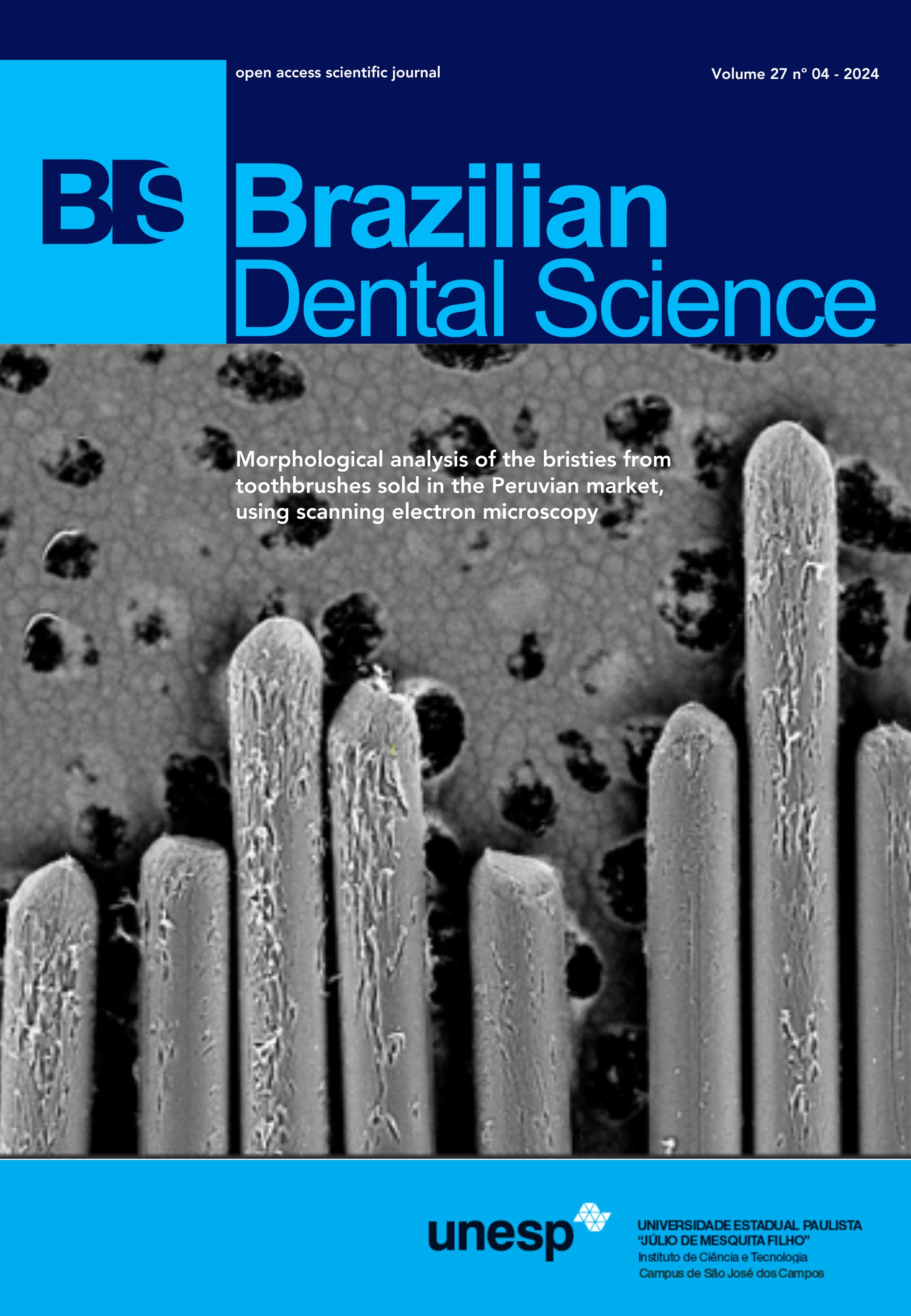Effect of bisphosphonate use on orthodontic tooth movement: A Systematic Review
DOI:
https://doi.org/10.4322/bds.2024.e4374Abstract
Statement of problem: As bisphosphonates have an action mode which interferes in the osteo-resorptive process, their use during dental treatment may occasionally have side effects, such as: inhibition of tooth movement, delayed bone healing, and osteonecrosis in the maxilla and mandible. Objective: The present study proposed a systematic review of the literature on the effect of systemic use of bisphosphonates on orthodontic tooth movement. Methods: This systematic review was developed based on PRISMA guidelines and recommendations and included scientific articles published until september 2023. The question raised was: “Does the systemic use of bisphosphonates interefere in orthodontic movement?” Results: We initially identified 51 articles in the electronic search. This number was then reduced to 13 publications after the analysis of titles and abstracts. Conclusion: Most studies of this systematic review point to the fact that the systemic use of bisphosphonates during orthodontic treatment seems to reduce the extent and speed of tooth movement, thus extending the treatment duration.
Downloads
Published
How to Cite
Issue
Section
License
Brazilian Dental Science uses the Creative Commons (CC-BY 4.0) license, thus preserving the integrity of articles in an open access environment. The journal allows the author to retain publishing rights without restrictions.
=================




























